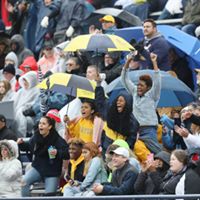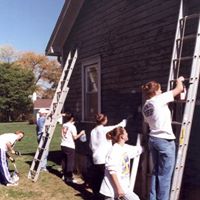Slip, Trip, and Fall Prevention
Slips, trips, and falls are the leading cause of accidents at Allegheny.
What is the difference between a slip, trip, or fall? Very little, if you are the victim. The pain is the same, so it really doesn’t matter which of the three caused your accident, right? Actually, though, there really are some significant differences.
Slips occur when there is too little friction or traction between your feet and the walking surface. The most common causes of slips are wet surfaces, ice or other weather hazards, spills, and poor tread on footwear. Preventive measures include:
- Wet surfaces: Shorten your stride, walk with feet pointed out slightly, and make wider turns.
- Spills: Clean up immediately.
- Weather hazards: Walk more slowly so you can react to traction changes. Wear slip resistant shoes or boots, and dry off shoes as soon as practical after entering a building (wet shoes on dry floors are as dangerous as dry shoes on wet floors). Wear sunglasses on sunny winter days so you can more easily see slippery areas.
- Poor tread on footwear, or generally poor traction: Wear slip resistant footwear, apply abrasive strips to smooth walking surfaces, post warnings.
- Keep both hands free for balance rather than in your pockets.
Trips commonly occur when your foot strikes an object and your momentum throws you off balance. To minimize the potential for this type of injury:
- Remove foreign objects on the walking surface.
- Do not allow carried packages to obstruct your view.
- If glasses fog due to atmospheric changes, clear them immediately.
- Use only proven walkways.
- Close desk and file drawers when not in use.
- Report burned out or missing lights.
- Be aware of elevator threshold positions.
- Report any uneven or broken pavement, sidewalks, or handrails.
Falls usually take place from one level to another. Preventive measures include:
- NEVER stand on a chairs to reach a high object. Always use a ladder.
- When using ladders, select the proper type and size, and use it properly.
- Walk up and down stairs, and never jump from the last step.
- Use handrails.
- Walk.
There is one more precautionary tip that applies in all these cases, and that is to PAY ATTENTION TO WHAT YOU ARE DOING. This is among the most common causes of injuries, and is the easiest to correct. The best walking surfaces and ideal weather conditions won’t be of any help if you are not watching where you are going.
There is one more precautionary tip that applies in all these cases, and that is to PAY ATTENTION TO WHAT YOU ARE DOING. This is among the most common causes of injuries, and is the easiest to correct. The best walking surfaces and ideal weather conditions won’t be of any help if you are not watching where you are going.


